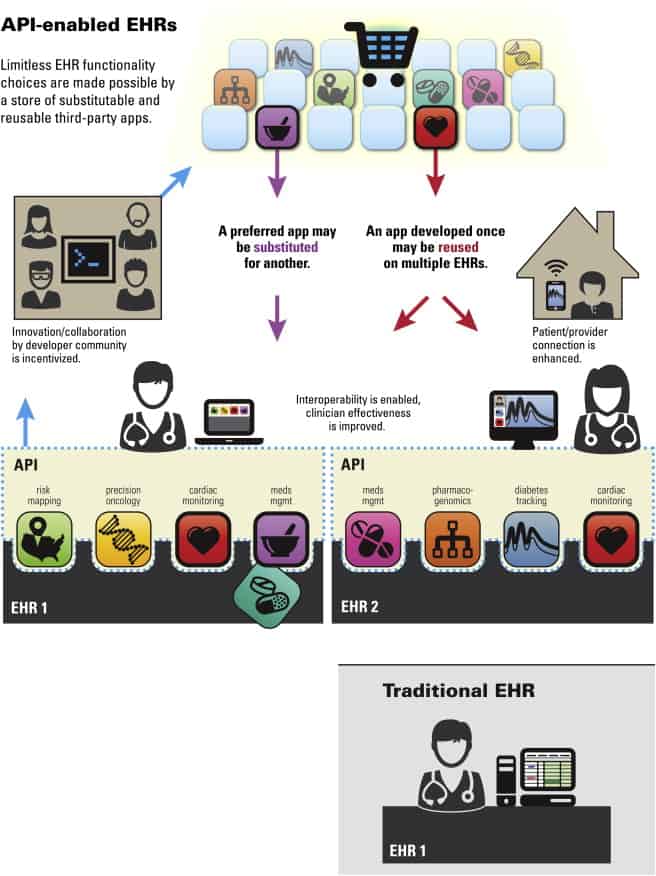There is a lot of buzz these days over precision medicine and if you’re stuck in the midst of EHR implementations and/or ICD-9/10 transitions, it might sound a bit farfetched to see how precision medicine will ever scale to the clinic. Integrating genomic data into the EHR is going to be a major challenge on its own and then there is the data from wearables, sensors, and other connected home monitoring devices. And once you have that data, how do you derive meaningful insights that can and will be used in the context of the care delivery process?
The latest issue of Cell Systems has an interesting piece outlining many of these challenges while offering a vision of how open APIs could catalyze a more innovative healthcare sector, at least in terms of what data analytics could do with greater data liquidity.
The authors begin with the challenges that EHRs create for developing any form of real-time, real world digital health, much less a practical approach to precision medicine. The article then lays out an argument for an “App-Based Economy” that would be less tethered to individual EHRs, and offer a vision more concentrated on open APIs connected to data warehouses and EHRs. The key difference is that this app-enabled ecosystem would enable substitutability of apps, which then allows for greater customizability rather than a one-size-fits-all approach as we see today.
The right approach to an API strategy would not only enable the entire value chain of data analytics services from population health management though care management, but it could offer mobile apps directly connected to the healthcare system. In a sense this is what HL7’s FHIR and accompanying Argonaut Project are attempting to realize downstream. The SMART API project the authors are involved in is based on open standards including FHIR, OAuth2, OpenID Connect, RxNorm, SNOMED, and LOINC and they urge the ONC to structure future certifications around the use of open APIs to move things along in the direction they espouse – a direction we see as the only possible route forward to truly transform healthcare delivery with modern tools.
The other aspects that are needed are standards for quality, privacy and security of the apps which, by the way, already exist in some other sectors of the current digital services economy where trade associations of telcos have worked collaboratively on both technology and business standards that can not only exchange data more readily but enable more scalable digital service collaborations. The scenario the authors outline also has implications for the ability of health IT players to actually build scalable platforms in the sense that Chilmark Research has been calling for in the interoperability space, (see our recent report on EHR platform services) and the need to think about how to actually realize platforms in health IT that can scale across the range of services required in healthcare.





I believe that the solution should be centered on a ‘patient data custodian’ model, where the custodian is a agent of the patient and other stakeholders and responsible for managaging storage and retrieval of patient data. As a repository for a patient’s data, it is better able to manage security and privacy constraints than a point-to-point system thru APIs. The custodian can offer the same APIs as proposed and be the clearinghouse and persistent store for patient data with abilities for analytical studies while protecting privacy.